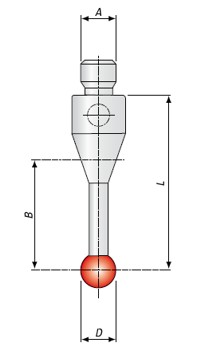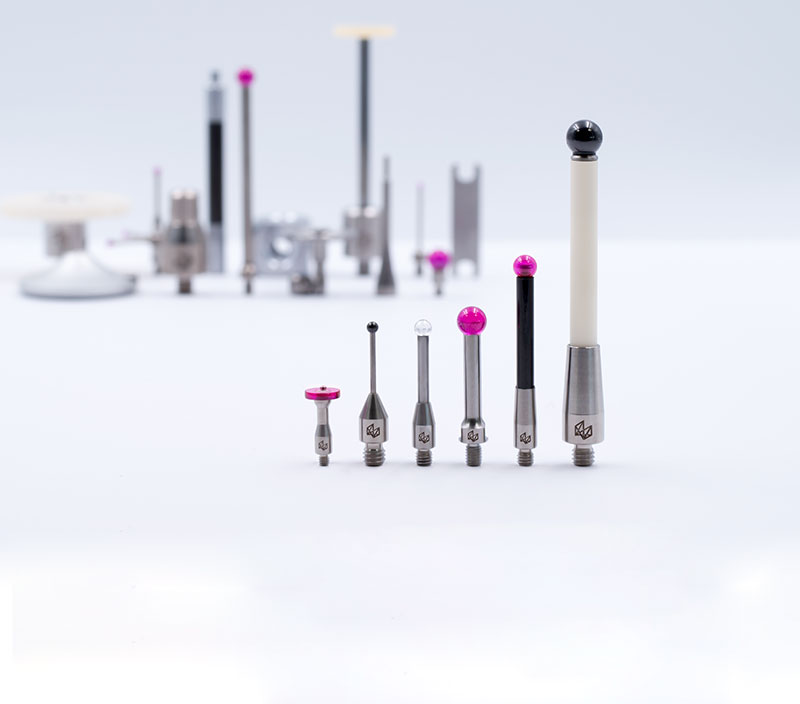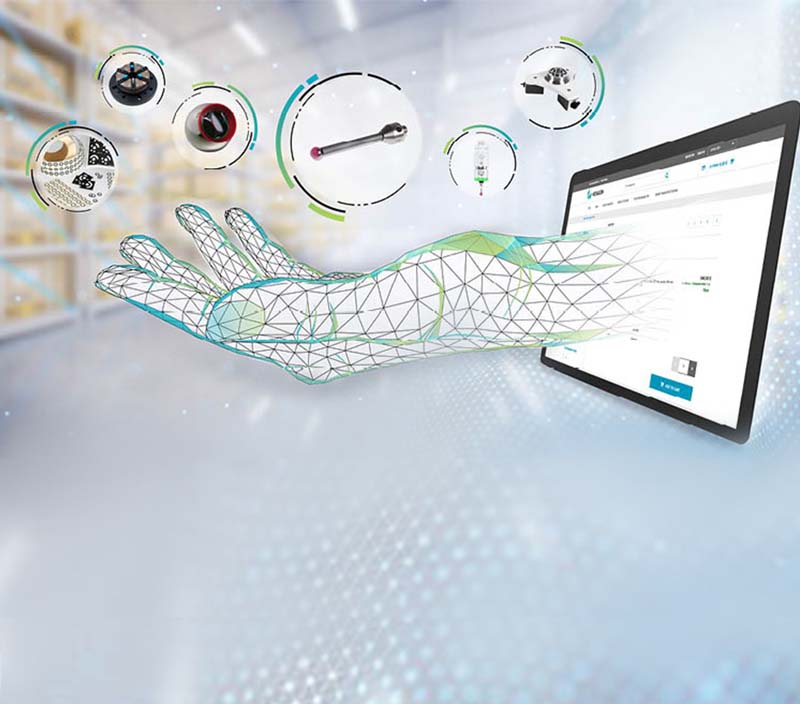What is a CMM stylus?
All about CMM styli
Contact us
A stylus (plural: styli) is the “tip” attached to a probe on a coordinate measuring machine, whether a traditional CMM machine or a portable measuring arm which makes physical contact with the component to be measured. A signal generated by triggering of the probe either by displacement or user input, enables a measurement to be taken. The type of part and features to be inspected generally will determine the type and size of stylus to be used. Maximum stiffness of the stylus and geometric accuracy of the stylus tip are vital to good measurements. Hexagon Metrology offers styli produced to the most exacting standards on automated CNC equipment. Careful design and stringent process control deliver styli with maximum rigidity, strong integrity of the bonding of the probe ball to the stem, and maximum sphericity of tips.
The performance of your CMM measurement equipment and inspection results can easily be compromised if you use a stylus with poor ball roundness, poor ball location, bad thread fit or a poor design that allows excessive bending during measurement. Most of these factors are difficult if not impossible to see with the naked eye. To ensure the best possible measuring results, Hexagon Metrology offers only the highest quality stylus products on this site from reputable brands and manufacturers with the highest standards of design and quality control.
Regular replacement of styli used on your coordinate measuring machine is also essential. While these products are very rugged, they do have a useful life, and should be replaced after long use periods, or after being dropped, crashed or mis-handled. When in doubt, always replace.

Terminology used on this site:
Styli are specified using A-D-L-BA=Thread size (M2 through M6)
D=Ball Diameter
L=Overall Length: This is the length from the rear mount (not including the thread) to the center of the ball.
B=Effective working Length: Measured from the center of the ball to the point at which the stem will shank out on a feature when probing normal to the part.
Stylus selection tips
To maintain greatest accuracy in your measurement on an automated coordinate measuring machine, follow these guidelines:Choose the shortest styli possible
The more deflection or bending of a stylus bends or deflects, the greater the error, and thus you will have lower accuracy. Choosing the shortest practical stylus length for your probing application is best.Minimise joints where possible
Every time you “build” a styli using joints and extensions, you introduce potential bending and deflection points. Use the minimum number of pieces wherever practical.Use the largest ball you can
A large ball maximizes the ball and stem clearance from the part, reducing the possibility for false triggers caused by 'shanking out' when the stem touches the part instead of the ball. Also, a larger ball will minimize the impact of the part’s surface finish on your measurements.Ball material selection
The industry standard and the optimum stylus ball material for the majority of measurement applications is Synthetic Ruby; one of the hardest known materials. Synthetic ruby is highly pure aluminum oxide which is grown into crystals (or “boules”) at 2000°C using flame fusion. The boules are cut and machined into spherical form. Ruby balls have a highly smooth surface, with high compression strength and high resistance to mechanical corrosion.There are only a few applications exists where ruby isn’t the preferred ball material. One is for heavy duty continuous contact scanning applications on aluminum. Because aluminum and the synthetic ruby material attracts, something called ‘adhesive wear’ can occur which results in a buildup of aluminum from the part surface onto the ball. In these cases, a silicon nitride ball is preferred.
For heavy duty continuous contact CMM scanning applications on cast iron, Zirconia balls are recommended, to minimize abrasive wear on the part surface.
Stylus stem material selection
Steel
Tungsten carbide
Tungsten carbide stems are best used for greatest stiffness when small stem diameters (required for small ball diameters 1 mm or less) or extended lengths up to 50 mm.Ceramic
For ball diameters greater than 3 mm, and lengths over 30 mm, ceramic stems offer stiffness comparable to steel but are significantly lighter than tungsten carbide. Ceramic stemmed styli can offer some crash protection for expensive probes as the stem tends to shatter in a collision, sacrificing the stylus but saving the triggering device.Carbon fiber
Carbon fiber combines maximum torsional and longitudinal stiffness with extremely low weight. Carbon fiber is inert, insensitive to temperature, and provides excellent protection in hostile industrial environments. Carbon fiber is the ideal material for maximizing stiffness with very low mass for CMM styli above 50 mm in length.


